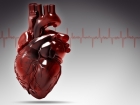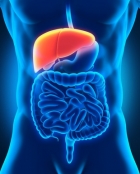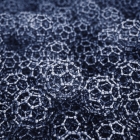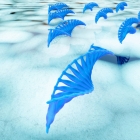Press monitoring
Spray of tiny particles of gold can potentially treat heart disease, research suggests
18.3.2022 | Press monitoring
Cutting-edge research led by University of Ottawa Faculty of Medicine Associate Professors Dr. Emilio Alarcon and Dr. Erik Suuronen suggests a spray-on technology using customized nanoparticles of one of the world's most precious metals offers tremendous therapeutic potential and could eventually help save many lives. Cardiovascular diseases are...
Immune-system-on-a-chip could speed up future vaccine development
16.3.2022 | Press monitoring
The immune system is incredibly complex, but a new breakthrough could help scientists unravel more of its secrets. Researchers at Harvard’s Wyss Institute have created a more accurate model of the human immune system in a microfluidic chip, providing a better platform to study how immune cells respond to vaccines and pathogens. In recent years,...
Spider silk could stabilize cancer-suppressing protein
14.3.2022 | Press monitoring
The p53 protein protects our cells from cancer and is an interesting target for cancer treatments. The problem is, however, that it breaks down rapidly in the cell. Researchers at Karolinska Institutet in Sweden have now found an unusual way of stabilizing the protein and making it more potent. By adding a spider silk protein to p53, they show...
Novel nanoparticles with potential for enhanced deep tumor therapy
11.3.2022 | Press monitoring
Researchers Dr. Yansong Feng and Prof. Hong Zhang at the Van 't Hoff Institute for Molecular Sciences at the University of Amsterdam (UvA) have designed and synthesized novel multi-layered, multi-functional nanoparticles that enable a combination of radiotherapy and photodynamic therapy for deep cancer tissue. An initial pre-clinical evaluation...
Surprising gut protein discovery is new target for constipation treatment
9.3.2022 | Press monitoring
Researchers in Australia have discovered that a touch-sensitive protein normally found in skin is also located in the gut. There, it seems to sense the presence of food and triggers contractions to push it along, while reduced levels of this protein may be implicated in conditions like constipation. The protein in question is known as Piezo2 and...
Cannabinoids from amoebae: New process for the production of active compounds
7.3.2022 | Press monitoring
A research team at the Leibniz Institute for Natural Product Research and Infection Biology – Hans Knöll Institute (Leibniz-HKI) in Jena, Germany has developed a new method to produce complex natural products in amoebae. These polyketides include various antibiotics but also olivetolic acid, a precursor of the herbal active ingredient...
Using nanorobots to help clean heavy metals from polluted water
4.3.2022 | Press monitoring
Prior research has shown that heavy metals make their way into the water table through landfill leakage, mining operations and industrial dumping. Heavy metals must be removed from water sources, and current methods call for complicated multi-step procedures to remove them. In this new effort, the researchers report a possible alternative –...
Magnetic microparticles allow remote control of select brain cells
2.3.2022 | Press monitoring
The ability to stimulate and or control cells in the brain could provide us with powerful new ways to understand and treat neurological disorders, and we're starting to see some very interesting ways this might be achieved. Scientists at University College London (UCL) have demonstrated in rodents a new type of "micromagnet" that can work as a...
Nanocarrier spray: Better crops without genetic modification
28.2.2022 | Press monitoring
Researchers at the RIKEN Center for Sustainable Resource Science (CSRS) in Japan have developed a way to improve crop quality without needing to create special genetically modified plants. Rather that changing plant genomes, the new technique relies on a spray that introduces bioactive molecules into plant cells through their leaves. The new...
Building artificial nerve cells
25.2.2022 | Press monitoring
For the first time, researchers demonstrate an artificial organic neuron, a nerve cell, that can be integrated with a living plant and an artificial organic synapse. Both the neuron and the synapse are made from printed organic electrochemical transistors. On connecting to the carnivorous Venus flytrap, the electrical pulses from the artificial...





























